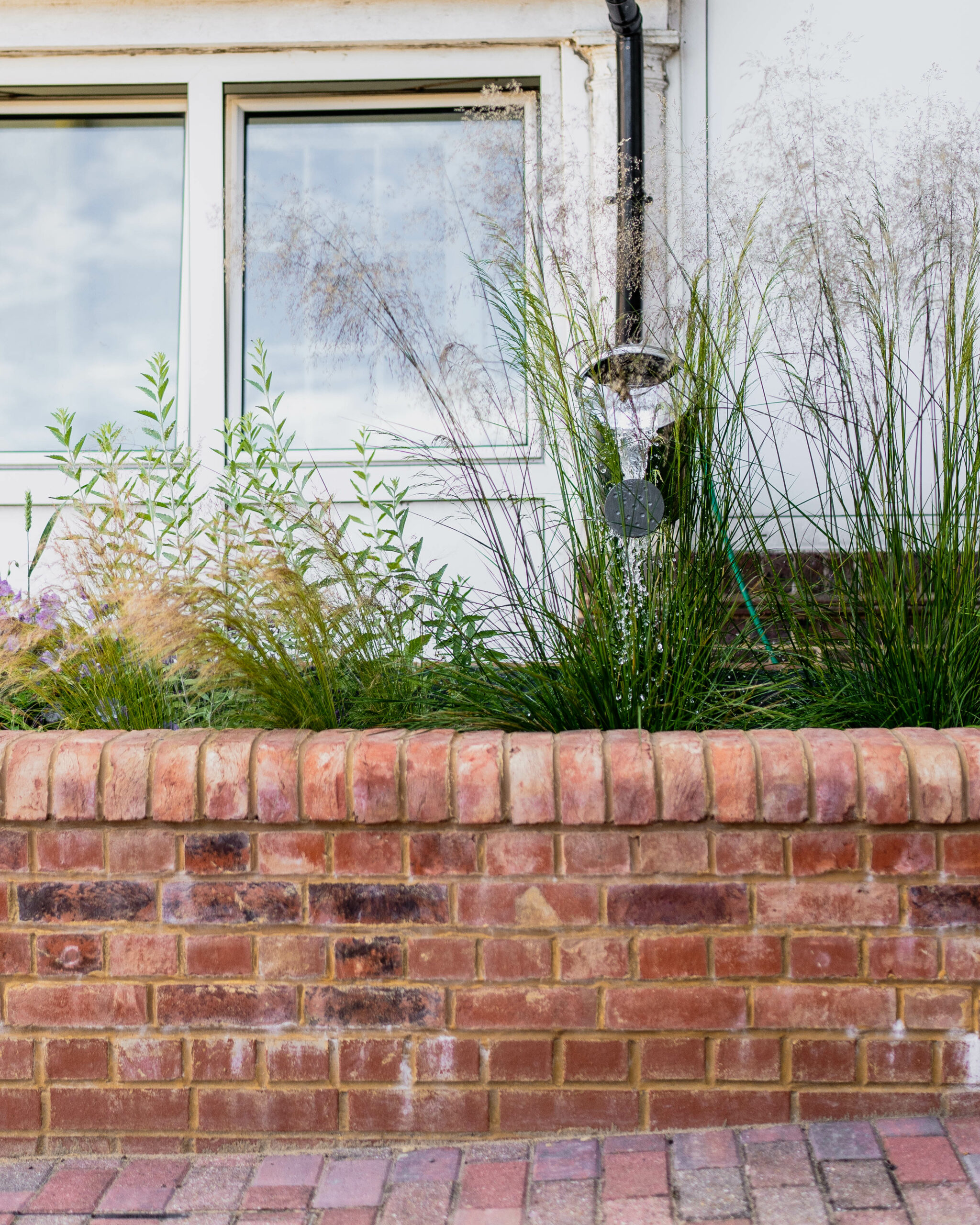
Rain Garden Campaign
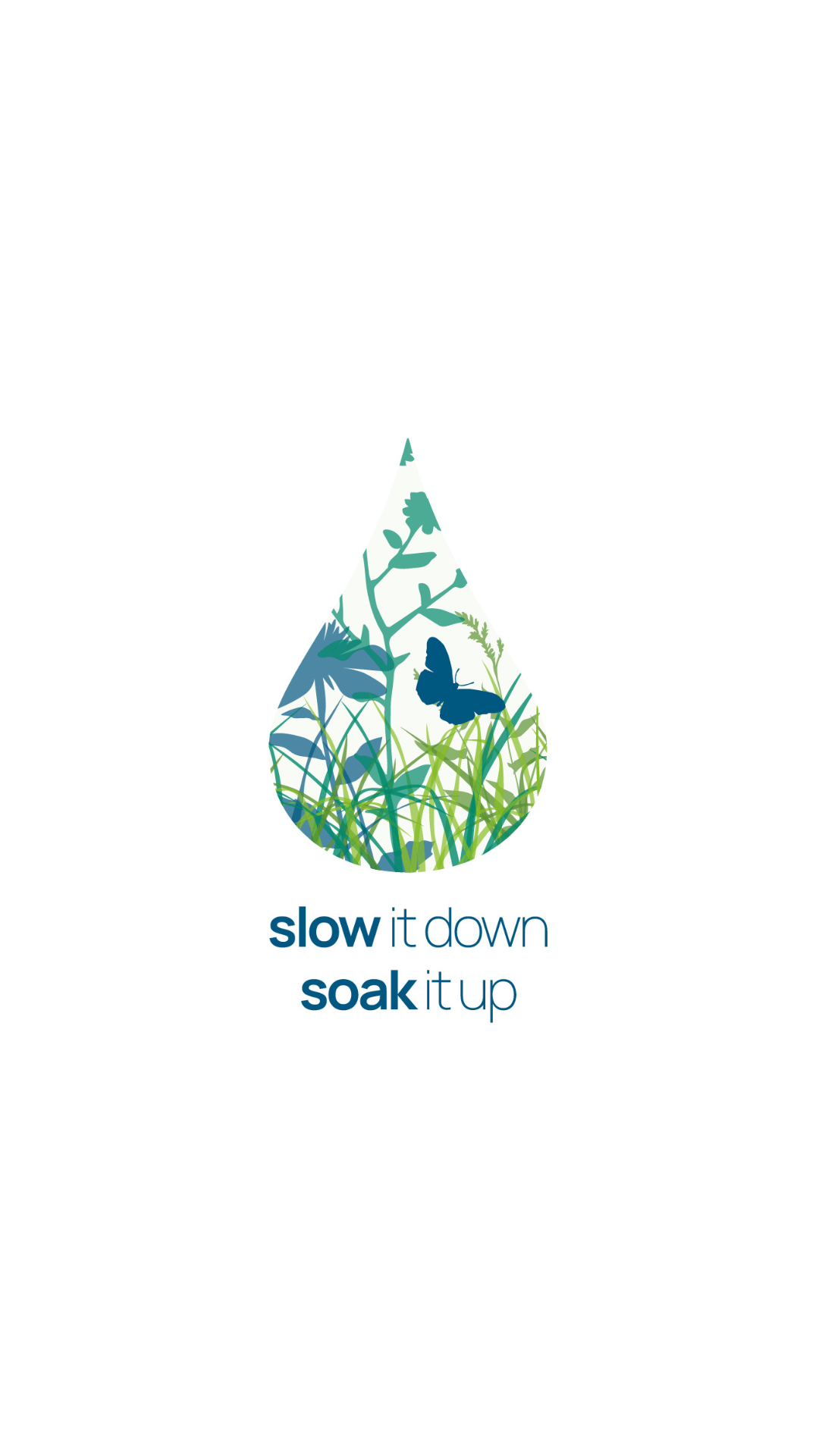
What is a Rain Garden?
They are an attractive, inexpensive and DIY friendly way to support the aquifer and create a welcoming space for wildlife.
A rain garden collects rainwater, slowing it down and allowing it to soak into the ground to replenish the aquifer beneath our feet. It mimics the natural way water moves through the environment, and can help compensate for the impacts of development.
There are two main types of rain garden: rain planters and rain gardens in the ground. Both are designed to collect water draining from roofs and other hard surfaces
- A rain planter can be either a filtration rain planter, which is sealed; or an infiltration rain planter, which is left with no base so some water soaks into the ground.
- A filtration rain planter can be positioned next to a building. These have extra drainage/overflow, so you control where the excess rainwater goes. This can be directed back down the original drain or even better, if garden space allows, to a rain garden in the ground.
- Rain gardens in the ground are shallow, saucer shaped depression in the earth. These are unlined, allowing water to soak in, and need to be at least 3m from house. You can create a swale or channel to divert water from down pipes into the rain garden, and you could even make a sequence including different elements – such as a water butt and a planter – to make a ‘rain chain’.
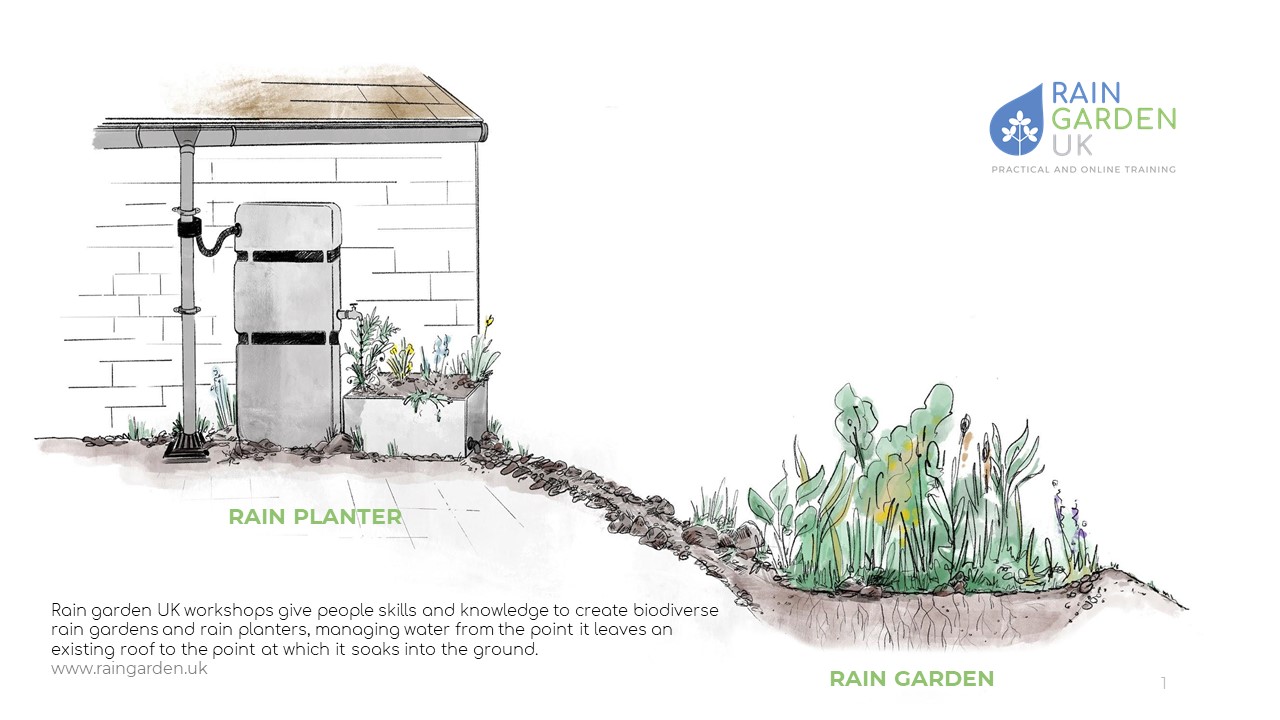
Planted with grasses and flowering perennials, rain gardens are not only a pleasant feature, they attract wildlife, such as butterflies, pollinators and birds. If they are collecting water from a hard surface, they can also help to treat low-level pollution.
Rain gardens are usually able to absorb all the rainwater they collect, however in storm events it is important that there is a means for water to escape into the existing drains. The rain garden is still helpful in this case. By slowing the flow it helps to regulate the amount and speed of the water, so the drains are better able to cope.
Even providing a small amount of extra capacity, you are helping to slow it down … soak it up!
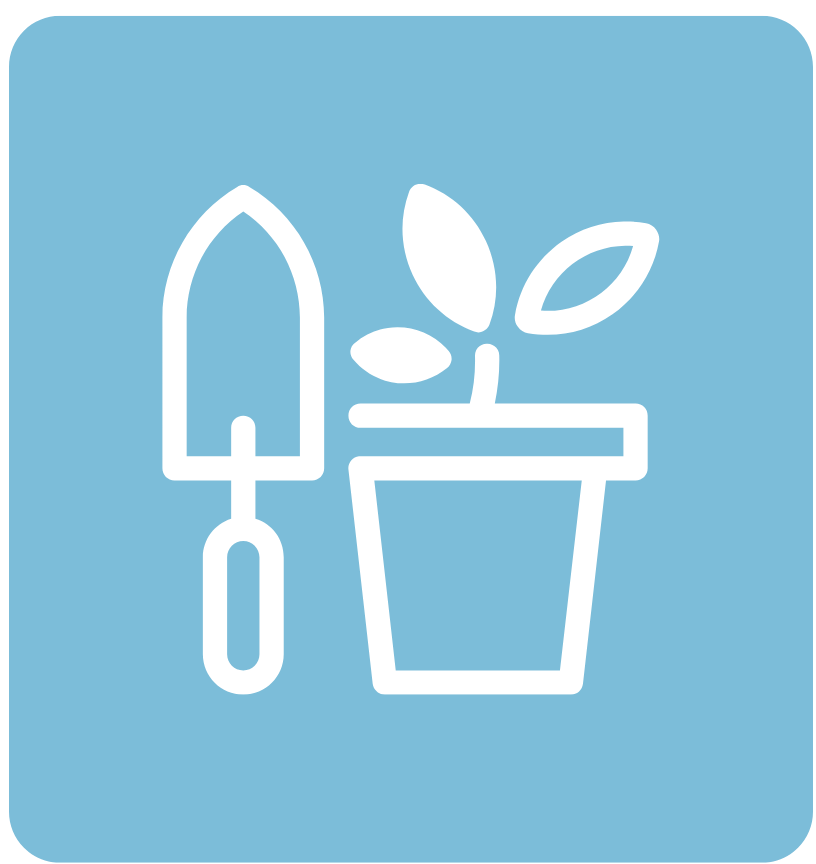
Creating a Rain Garden
Creating a rain planter is an achievable task for any experienced gardener or crafty person. There is no need to alter the existing drainage system; it is simply a case of re-routing the water that runs off your roof.
The following steps give an overview of the process to provide an idea of the main principles. There are links to further guidance and training at the bottom of this page.

Rain Garden Resources
Check out these resources before you get started building. We've put together some great videos and guides of how to build your first rain garden planter.

Get Involved
Join our campaign. Let’s get as many rain gardens as we can in the Brighton, Hove and Lewes area. We would love to hear from you if you are a resident, business or community group and want to join in.
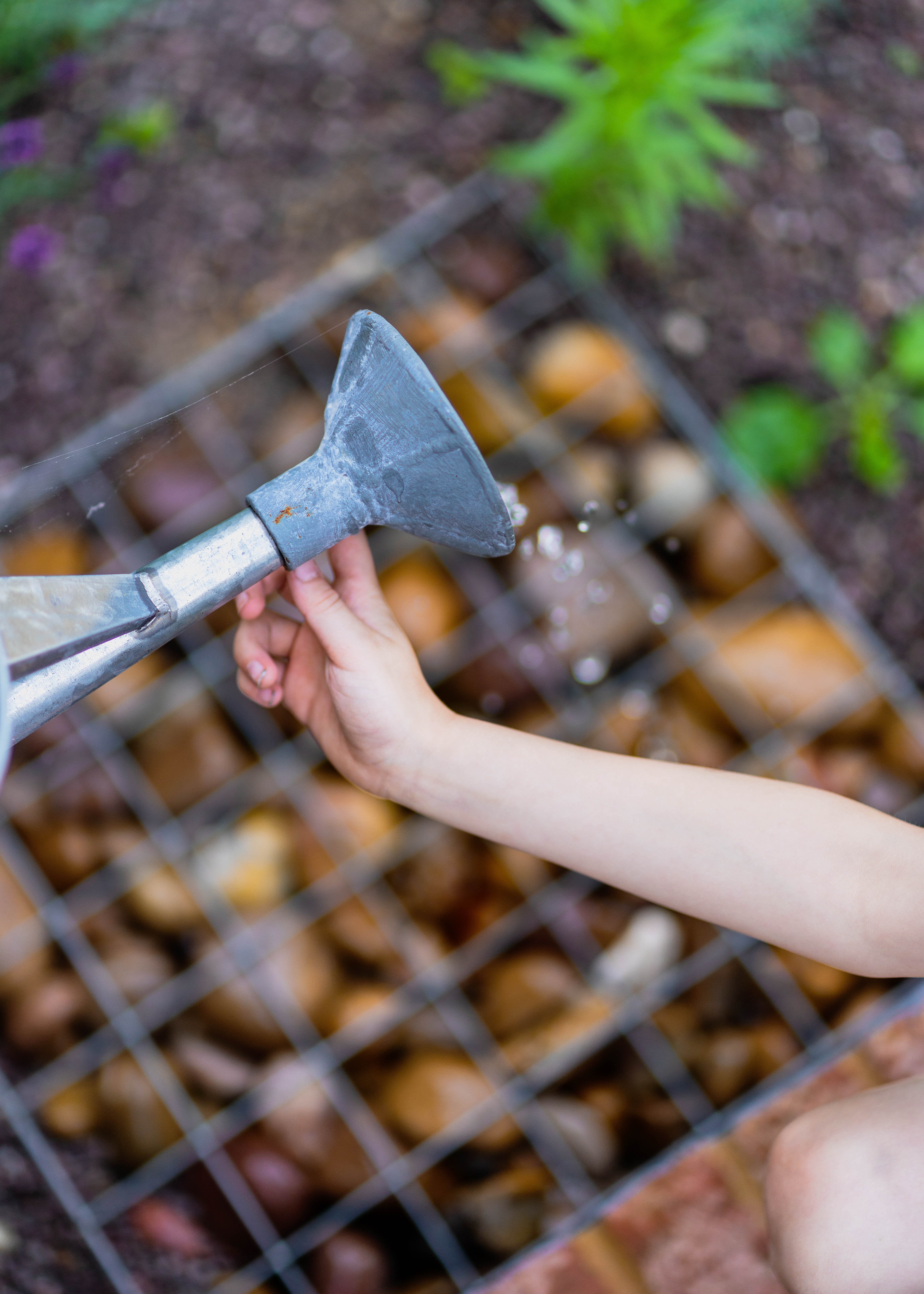
Why Do We Need Rain Gardens?
When rain falls on undeveloped land it soaks into the ground, is taken up by plants and filters through to groundwater; or is pumped out for us to drink and use.
Plants release water to the atmosphere, through a process known as evapotranspiration, as well as directly through evaporation from the soil, and that water then falls as rain.
Permeable surfaces in undeveloped land let the water soak in. But there’s a problem. The more areas we develop, the more hard – or impermeable – surfaces we have. Water cannot soak in to these impermeable areas, so travels more quickly over the ground to the drains. This puts too much surface water run-off into our outdated drainage systems, and we end up with sewage overflows and flooding.
TAP is calling for communities, residents and businesses to create as many rain gardens as we can in the Brighton, Hove and Lewes area by 2025.
We are putting together guidance, and tips and tricks to encourage people to look at different ways of managing the rainwater that lands on their homes and gardens, and we will be publishing stories and case studies to spread the word and inspire more people to join in.
Climate change is a reality. We are having hotter, drier summers, warmer, wetter winters and more frequent and intense storm events. At the same time more land is being developed, putting increasing pressure on drainage systems and ultimately on the aquifer. We have to learn to take good care of our water.
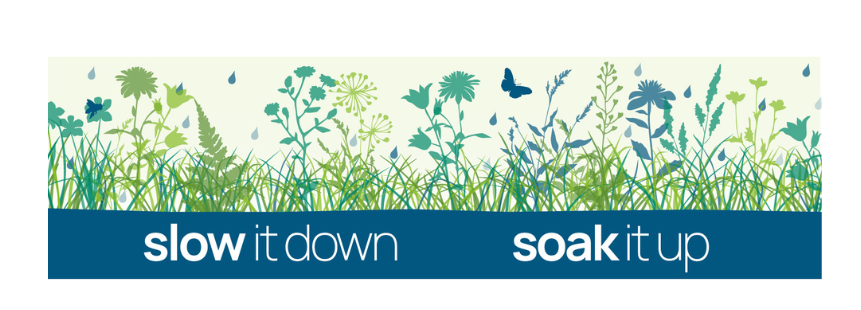



 Chrome
Chrome
 FireFox
FireFox
 Edge
Edge